The Santa Rosa plum is one of the most popular and versatile plum varieties for home gardeners and backyard orchards. Known for its vibrant red-purple skin, juicy amber flesh, and sweet-tart flavor, this plum is perfect for fresh eating, baking, preserves, and jams. Planting a Santa Rosa plum tree is a rewarding endeavor, but success begins with proper planning, careful planting, and consistent care.
Inspired by the video “Planting a Santa Rosa Plum Tree,” this comprehensive guide walks you through the steps of selecting the ideal site, planting the tree, caring for it, and ensuring healthy growth and fruit production.
Introduction to Santa Rosa Plums
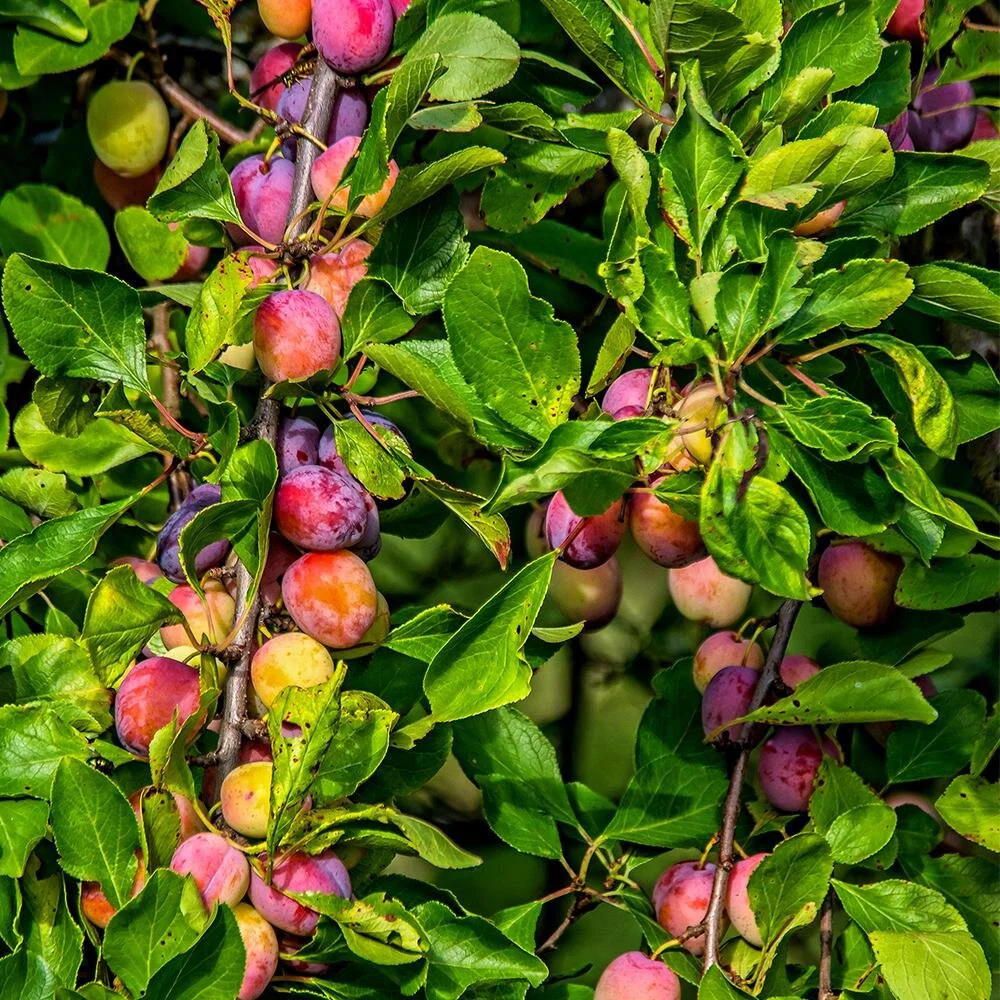
Santa Rosa plums are a Japanese-American hybrid developed in California in the early 1900s. They are highly prized for their flavor, productivity, and adaptability.
Key Features:
- Fruit Appearance: Round, medium to large-sized, with red-purple skin and amber-yellow flesh.
- Flavor Profile: Sweet-tart, juicy, and rich, ideal for fresh eating and culinary uses.
- Tree Growth: Medium-sized, upright growth habit, reaching 15–20 feet in height.
- Pollination: Partially self-fertile; cross-pollination with another plum variety like Satsuma or Beauty can improve fruit set.
- Climate Preference: Thrives in temperate climates with mild winters and warm summers.
Understanding these characteristics helps gardeners provide optimal growing conditions for a Santa Rosa plum tree.
Step 1: Selecting the Ideal Site
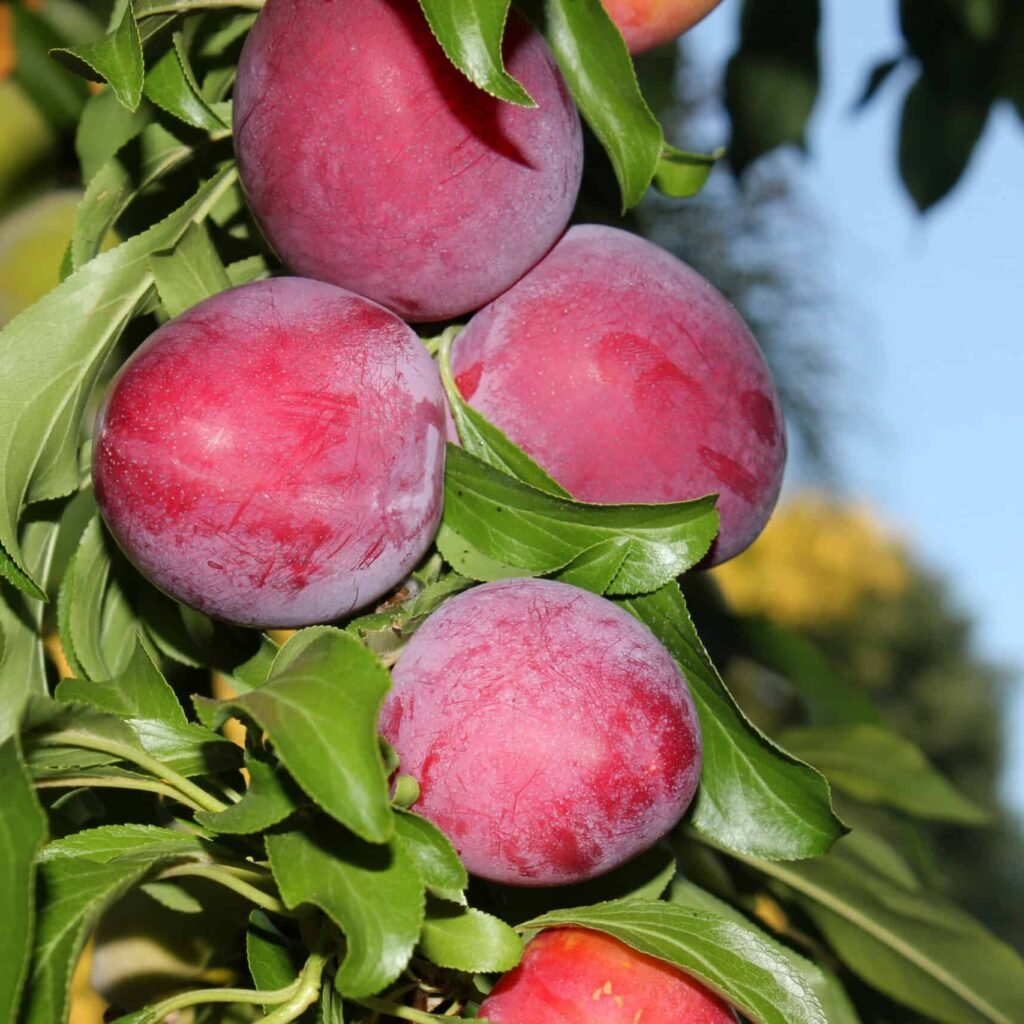
Site selection is crucial for healthy growth and abundant fruiting:
Sunlight Requirements
- Santa Rosa plum trees require full sun, at least 6–8 hours per day.
- Full sunlight promotes strong growth, better fruit color, and sugar development.
Soil Requirements
- Well-draining soil is essential, as plum trees are sensitive to waterlogged roots.
- Sandy loam or loamy soils enriched with organic matter are ideal.
- Soil pH should be slightly acidic to neutral, around 6.0–7.0.
Space Considerations
- Standard Santa Rosa plum trees: 15–20 feet apart.
- Semi-dwarf or dwarf varieties: 10–12 feet apart.
- Adequate spacing ensures good airflow, reduces disease risk, and allows sunlight to reach all branches.
Step 2: Preparing the Planting Hole
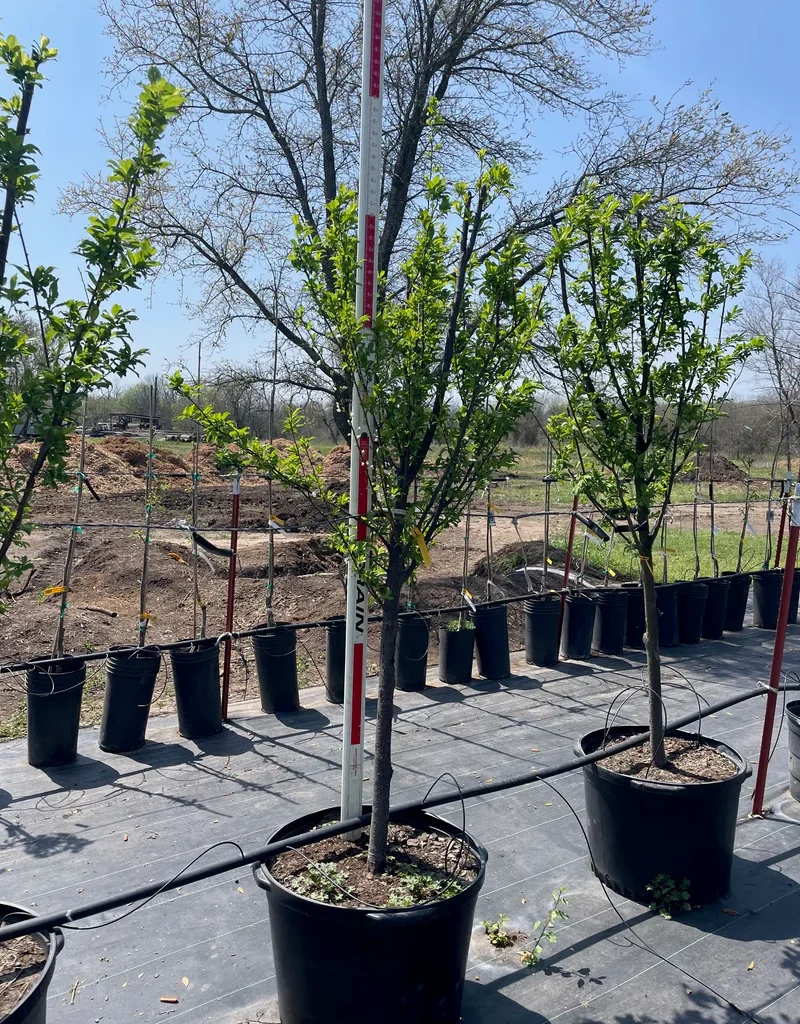
Proper preparation is key to establishing a healthy Santa Rosa plum tree:
- Dig a Hole: The hole should be 2–3 times wider than the root ball and the same depth as the root system.
- Loosen the Soil: Break up compacted soil at the bottom and sides to allow roots to penetrate easily.
- Amend the Soil: Mix in compost or well-rotted manure to improve fertility and soil structure. Avoid excessive fertilizer at planting, as young roots are sensitive to high nutrient concentrations.
Step 3: Planting the Santa Rosa Plum Tree
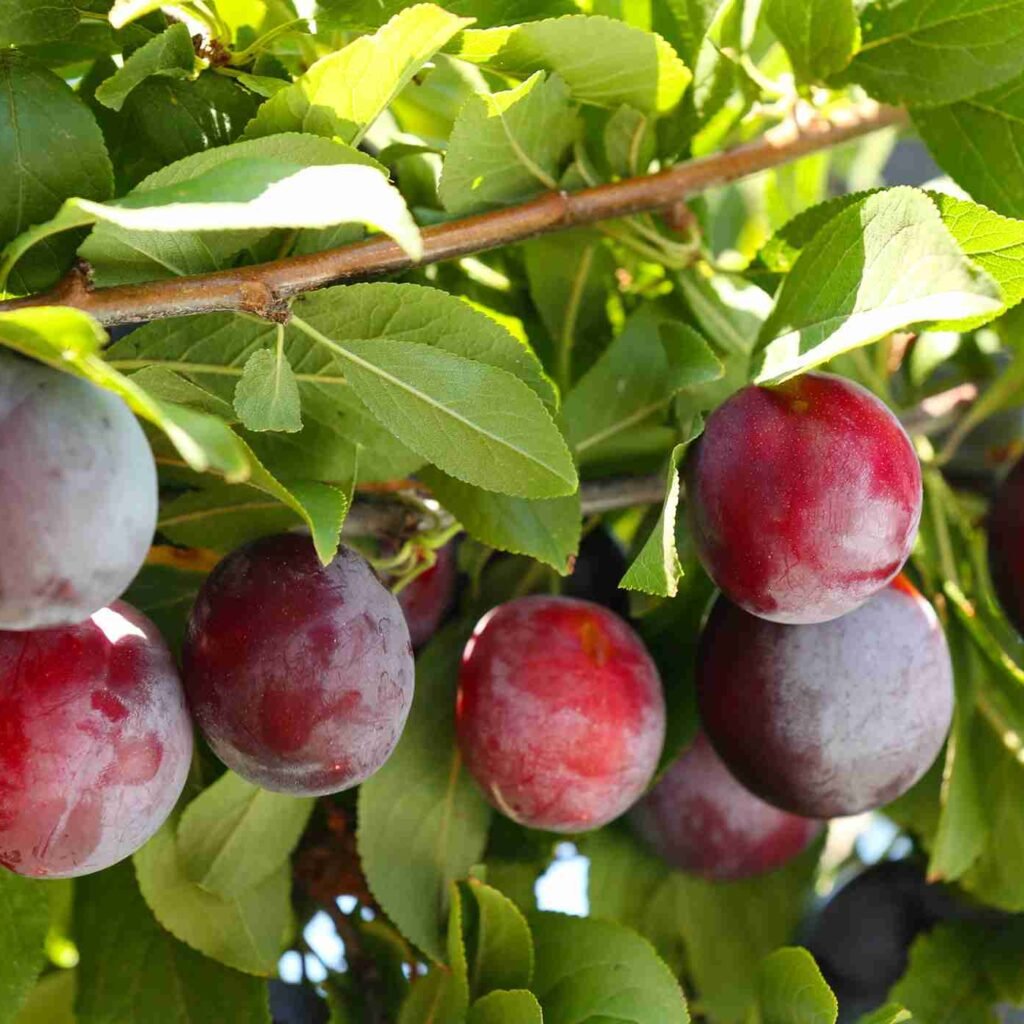
Positioning the Tree
- Place the tree in the center of the hole, spreading the roots evenly.
- Ensure the root flare (where roots meet the trunk) is slightly above soil level. Planting too deep can cause root rot, while planting too shallow may dry out the roots.
- Backfill gently with amended soil, pressing lightly to remove air pockets.
Watering at Planting
- Water thoroughly immediately after planting to help settle the soil and hydrate the tree.
- Consistent moisture in the first few weeks helps young roots establish.
Step 4: Mulching for Soil Health
Applying mulch around the base of your Santa Rosa plum tree offers multiple benefits:
- Moisture Retention: Reduces evaporation and keeps roots hydrated.
- Weed Suppression: Minimizes competition for nutrients and water.
- Soil Temperature Regulation: Keeps roots cooler in summer and warmer in winter.
- Nutrient Supply: Organic mulch decomposes over time, enriching the soil naturally.
Mulching Tips
- Apply 3–4 inches of wood chips, straw, or shredded bark around the tree base.
- Keep mulch 4–6 inches away from the trunk to prevent rot.
Step 5: Pruning a Newly Planted Tree
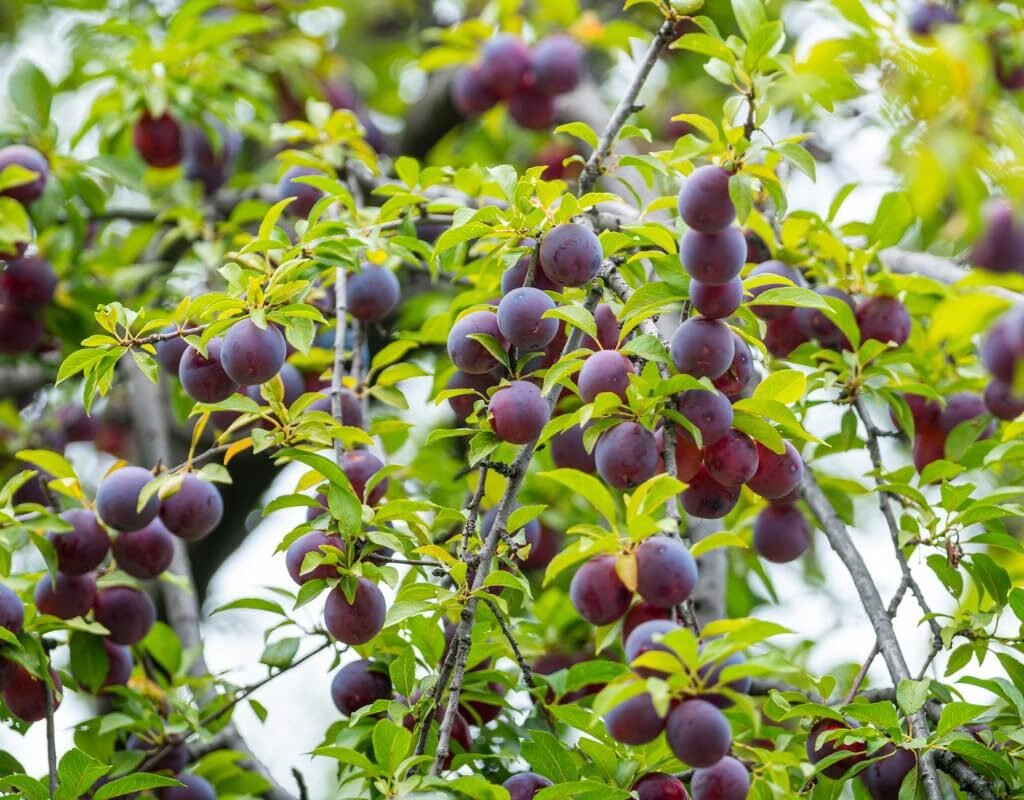
Pruning is essential for developing a strong structure and encouraging fruiting:
Initial Pruning
- Remove broken or damaged branches at planting.
- Shorten the central leader slightly to promote lateral branching.
- Remove any branches growing inward or crossing other limbs.
Long-Term Structure
- Santa Rosa plums benefit from an open-center or vase-shaped canopy, which allows sunlight to penetrate and air to circulate.
- Annual pruning after the first year maintains structure and encourages flowering and fruit production.
Step 6: Watering and Fertilization
Proper watering and fertilization are essential for the first year:
Watering
- Water deeply 2–3 times per week during dry periods.
- Ensure soil is consistently moist but not waterlogged.
- Reduce watering in cooler months or after rainfall.
Fertilization
- Use a balanced fertilizer, such as 10-10-10, after 4–6 weeks of planting.
- Avoid excessive nitrogen, which encourages leafy growth over fruiting.
- Organic alternatives like compost, seaweed extract, or aged manure also provide nutrients safely.
Step 7: Pollination Considerations
Santa Rosa plum trees are partially self-fertile, meaning they can produce fruit without a pollinator. However, planting a second plum variety nearby enhances pollination and fruit set:
- Compatible varieties include Satsuma, Beauty, or Methley plums.
- Ensure pollinator trees are within 50 feet for optimal cross-pollination.
- Attract bees by planting pollinator-friendly flowers nearby.
Step 8: Pest and Disease Management
Santa Rosa plums are susceptible to pests and diseases, requiring proactive care:
Common Pests
- Aphids: Cause leaf curling and weaken growth.
- Plum Curculio: Larvae can damage developing fruit; use organic or chemical controls as necessary.
- Birds: Particularly attracted to ripe plums; netting protects the crop.
Common Diseases
- Brown Rot: A fungal disease affecting blossoms and fruit; prevent with pruning and fungicides.
- Bacterial Spot: Causes leaf and fruit lesions; managed with copper sprays and proper sanitation.
- Powdery Mildew: White coating on leaves; controlled with sulfur or potassium bicarbonate sprays.
Regular monitoring, proper pruning, and maintaining tree health reduce the risk of pest and disease damage.
Step 9: Harvesting Santa Rosa Plums
Santa Rosa plums typically begin producing fruit in 2–4 years after planting, depending on tree size, rootstock, and growing conditions.
Harvest Indicators
- Fruit should be fully colored, red-purple on the outside with amber flesh.
- Fruit should yield slightly to gentle pressure, indicating ripeness.
- Taste-testing is the most reliable method to determine optimal harvest time.
Harvesting Tips
- Pick plums carefully to avoid bruising.
- Use gentle hand-picking or scissors for fruiting branches.
- Harvest in the morning for best fruit firmness and freshness.
Step 10: Long-Term Care and Maintenance
Caring for a Santa Rosa plum tree goes beyond planting:
- Annual Pruning: Maintain tree structure and remove weak or diseased wood.
- Consistent Watering: Especially during flowering and fruiting periods.
- Fertilization: Provide nutrients annually based on soil tests and growth observations.
- Pest and Disease Monitoring: Early detection prevents serious damage.
- Fruit Thinning: Remove excess fruit when necessary to improve size and quality of remaining plums.
Proper care ensures healthy trees that provide abundant, high-quality fruit year after year.
Bonus Tips for Backyard Gardeners
- Container Planting: Dwarf Santa Rosa varieties can thrive in large pots with well-draining soil.
- Mulching: Refresh mulch yearly to maintain soil health.
- Winter Protection: Protect young trees from frost with cloth or temporary wind barriers.
- Pollinator Support: Plant flowers that attract bees to improve fruit set.
Final Thoughts
Planting a Santa Rosa plum tree is a rewarding way to enjoy fresh, juicy plums from your own garden. Success depends on careful site selection, proper planting, consistent care, and proactive maintenance.
Key takeaways:
- Choose a sunny, well-draining site with sufficient spacing.
- Plant the tree correctly, ensuring the root flare sits above soil level.
- Apply mulch and prune to encourage strong structure.
- Water consistently and fertilize appropriately.
- Monitor for pests and diseases and protect fruit during harvest.
With patience and dedication, your Santa Rosa plum tree will grow into a healthy, productive tree that provides sweet, flavorful plums for fresh eating, baking, and preserving for years to come.
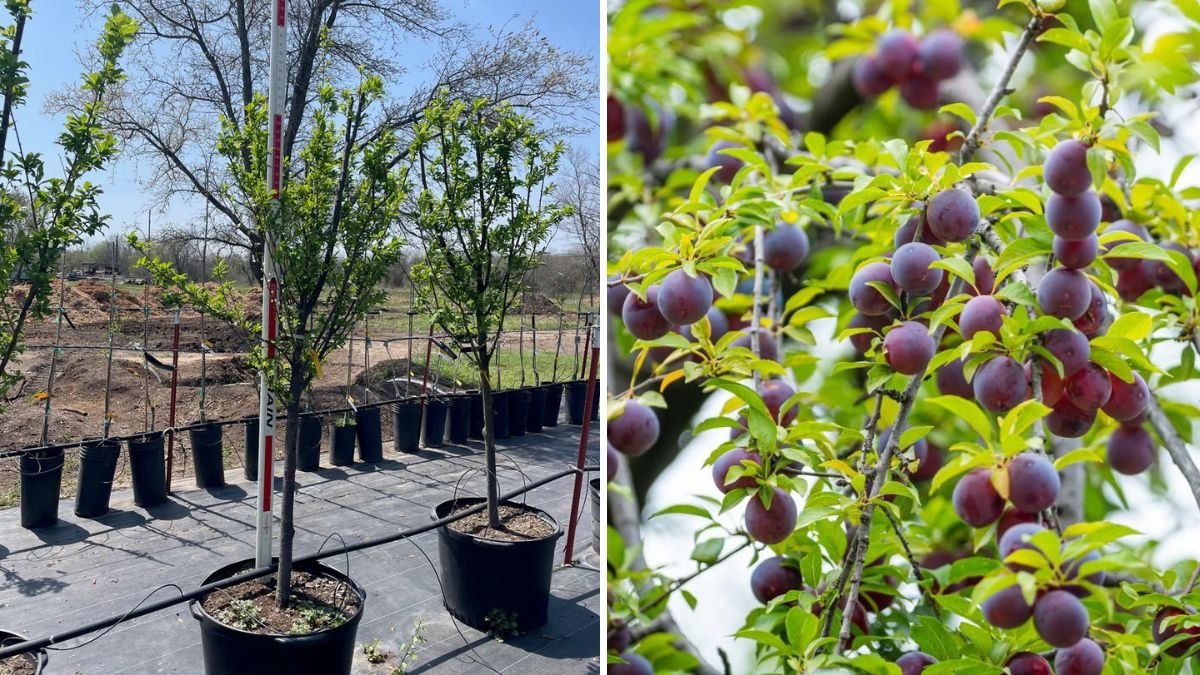
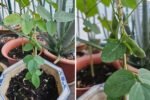

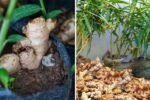

Leave A Comment